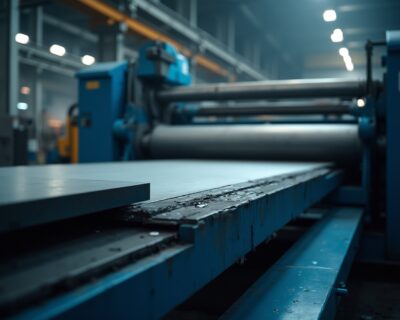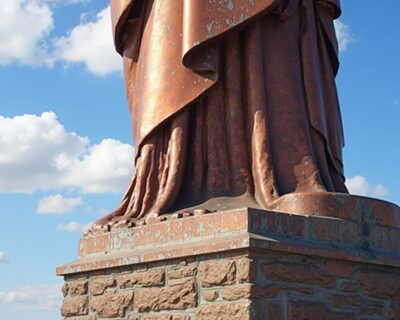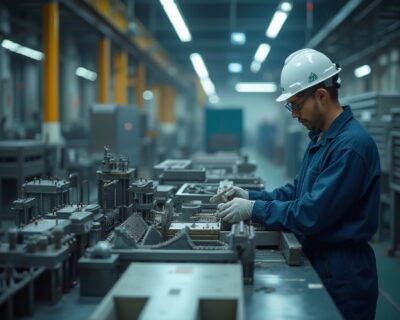Blog

Understanding the Copper in the Statue of Liberty: An In-Depth Tutorial
Overview
The article focuses on the significance of copper in the construction and preservation of the Statue of Liberty, highlighting its role in both the statue’s structural integrity and its iconic patina. It emphasizes that copper’s durability and oxidation process not only contribute to the statue’s aesthetic appeal but also serve as a protective layer against corrosion, showcasing the material’s importance in both historical and contemporary contexts.
Introduction
The Statue of Liberty, an enduring symbol of freedom, stands not only as a testament to artistic achievement but also as a marvel of engineering and material science. Central to its construction is copper, a material chosen for its remarkable durability and versatility, which has played a vital role in shaping the statue’s iconic presence. As the copper has aged, it has transformed from a bright, reflective surface to the distinctive green patina that defines the monument today, illustrating the complex interplay between natural processes and human craftsmanship.
This article delves into the multifaceted significance of copper in the statue’s construction, from the meticulous craftsmanship involved in its assembly to the ongoing conservation efforts required to preserve this cultural landmark. Additionally, it explores the economic implications of copper procurement in monumental projects, highlighting the necessity for ethical sourcing and adherence to international standards.
By examining these elements, a deeper understanding of the statue’s legacy and the material’s relevance in both historical and contemporary contexts emerges.
The Role of Copper in the Statue of Liberty’s Construction
Copper in the Statue of Liberty serves a crucial function, comprising its iconic exterior cladding. Chosen for its exceptional durability and malleability, this metal enables the intricate designs and shapes that characterize this monumental figure. The outer layer of the statue measures approximately 2.4 mm in thickness and was initially finished in a bright, shiny metallic hue.
Over time, exposure to environmental elements has led to the oxidation of the copper in the Statue of Liberty, resulting in the distinctive green patina visible today. This transformation not only enhances the statue’s visual attractiveness but also creates a protective shield against additional corrosion, exemplifying the material’s beneficial properties as a construction resource. Additionally, beryllium alloy, known for its high strength and electrical conductivity, is utilized in applications such as electrical connectors and non-sparking tools, enhancing safety in hazardous environments.
Oxygen-free metal (OF/OHFC), with its excellent thermal and electrical conductivity, is essential in critical medical components, ensuring reliability and performance. Furthermore, nickel alloys are recognized for their exceptional resistance to corrosion in marine environments, making them ideal for applications in shipbuilding and offshore structures. As we look forward, the refined metal demand in North America is anticipated to increase by 2.1% in 2024 to 2.285 million tons, reflecting the ongoing significance of this material in construction and architecture.
According to Laura Wood, Senior Press Manager at ResearchAndMarkets.com, ‘ResearchAndMarkets.com is the world’s leading source for international market research reports and market data,’ emphasizing the importance of understanding market trends. Furthermore, the case study titled ‘Copper Demand and Supply Projections‘ highlights that by 2040, total demand for copper is projected to reach 36,379 kt, with a notable increase in secondary supply and reuse. These trends underscore the material’s lasting significance in both historical and contemporary contexts.
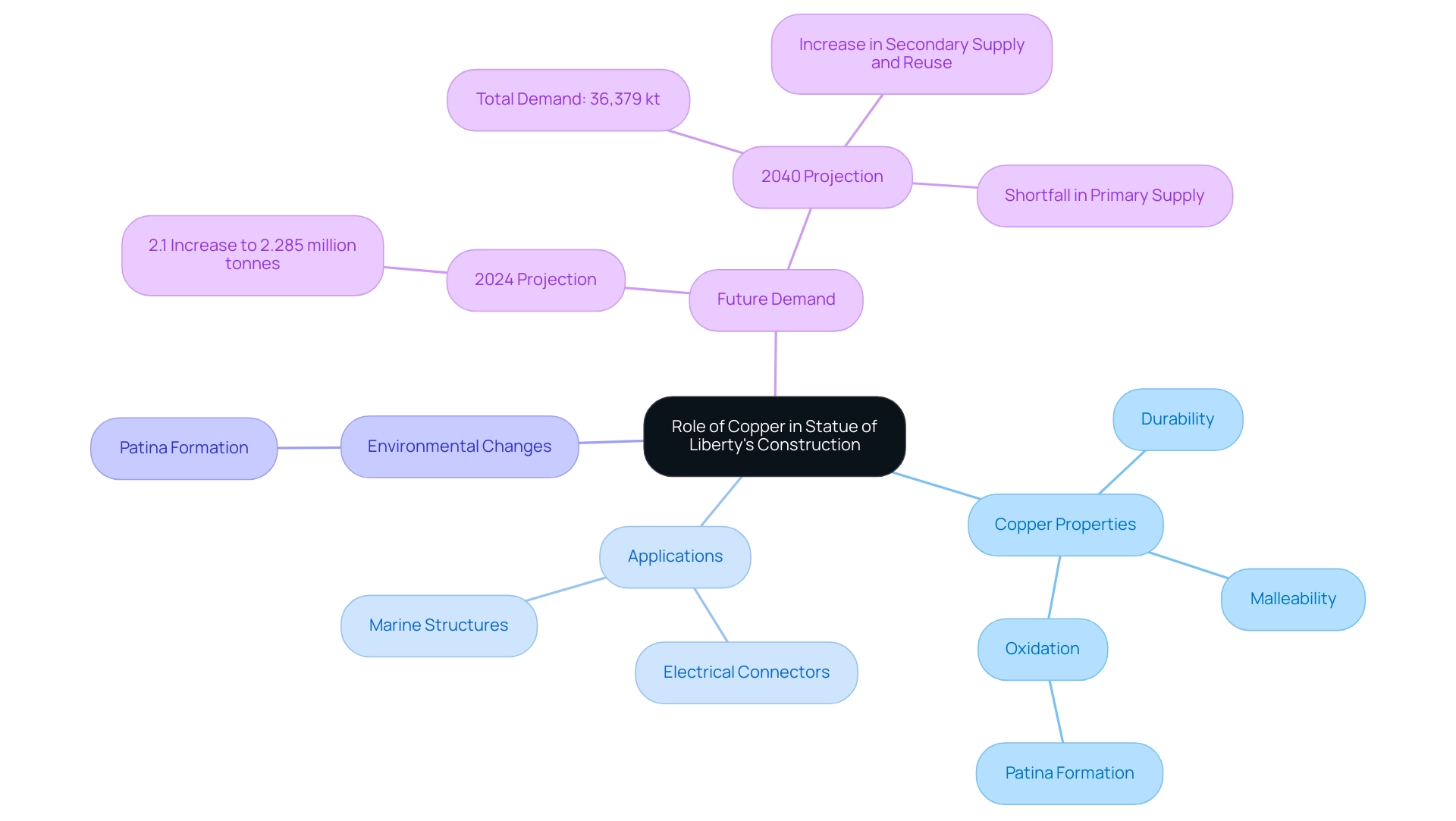
Craftsmanship and Labor: Building the Copper Icon
The creation of the Statue of Liberty stands as a testament to exceptional craftsmanship and labor, spearheaded by the renowned French sculptor Frederic Auguste Bartholdi. Originally constructed in France, the statue was carefully disassembled and shipped to the United States for reassembly, reflecting a meticulous approach to monumental sculpture. Skilled artisans employed advanced techniques such as repoussage, where metal sheets were shaped by hammering from the reverse side to produce intricate raised designs.
This labor-intensive process resulted in a total of 300 individual metal pieces that were expertly joined, necessitating precise engineering to ensure structural integrity. The workforce included not only metalworkers but also a diverse group of craftsmen, engineers, and laborers, all of whom played critical roles in bringing Bartholdi’s ambitious vision to life. Their unwavering expertise and commitment were essential in crafting this enduring symbol of freedom and democracy, highlighting the vital role of skilled labor in monumental projects.
This collaborative spirit mirrors today’s emphasis on craftsmanship, as seen in initiatives like UNESCO’s Living Human Treasures System, which aims to preserve and promote traditional skills for future generations. Furthermore, since the 1990s, digital technology has made remarkable achievements in the conservation of cultural heritage, enhancing our understanding of craftsmanship. As noted by Brizard, Derde & Silberman, ‘A digital reconstruction made at the archaeological site of Ename in Belgium is one of the first digital applications combining live video with overlaid 3D reconstructions to allow viewers to understand the history of the site.’
This intersection of modern technology and traditional craftsmanship underscores the ongoing efforts to safeguard these invaluable skills.
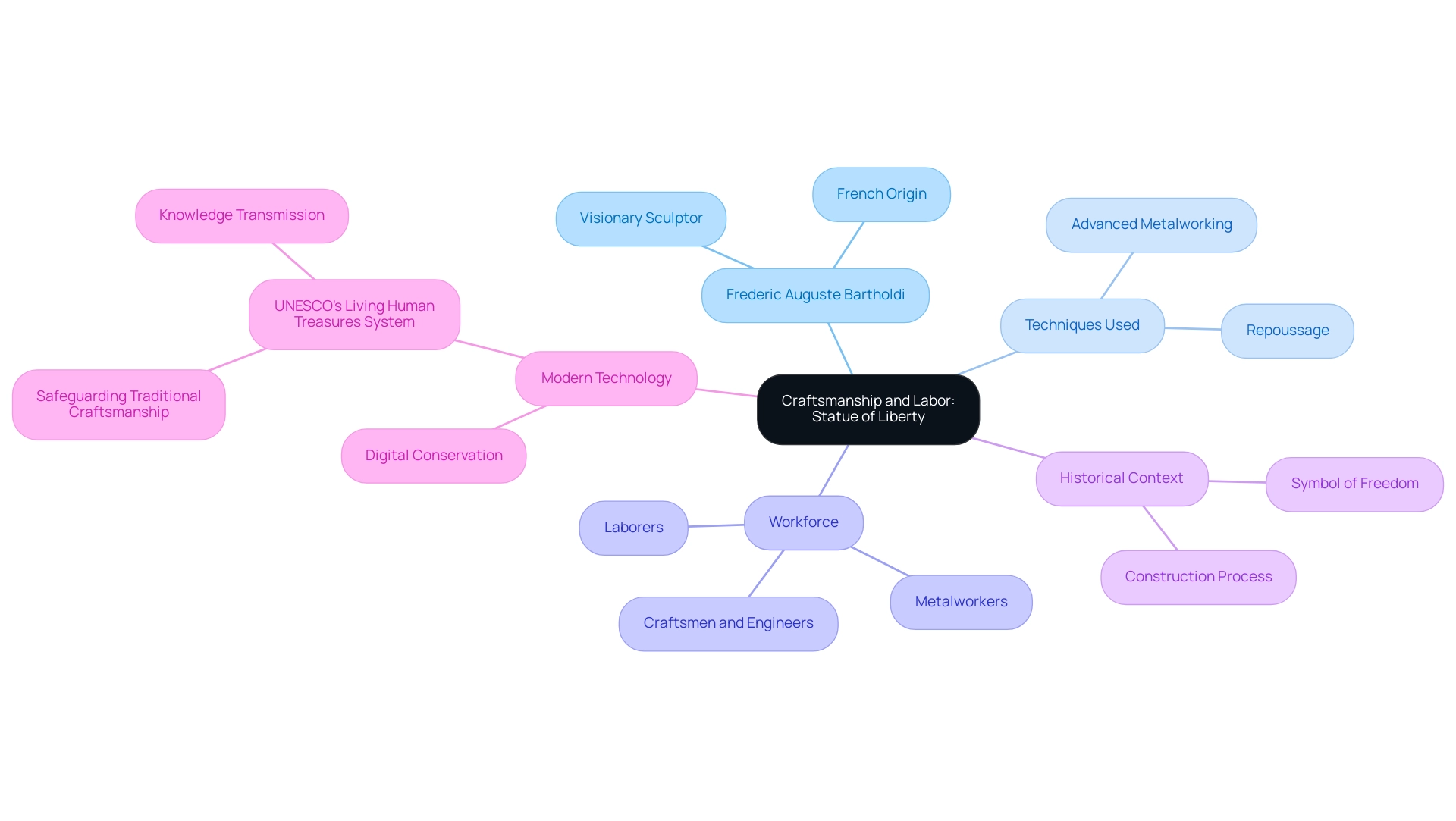
The Significance of Patina: A Transformation Over Time
The iconic green patina on the Statue of Liberty, which consists of copper in the statue of liberty, is a direct result of a natural oxidation process that began soon after its installation. Over the years, the copper in the Statue of Liberty reacts with environmental factors such as moisture, oxygen, and pollutants, resulting in a transformation from its original shiny appearance to a distinctive green hue. This patina layer serves a vital function, acting as a protective barrier that safeguards the underlying copper in the statue of liberty from further corrosion and environmental degradation.
Research indicates that at elevated temperatures, particularly around 100 °C, the weight increase rate of cupric oxide (CuO) demonstrates a significant rise, which is crucial for understanding corrosion dynamics in moist environments. This knowledge is particularly relevant to the corrosion behavior of metal canisters used in nuclear waste storage, as the oxide film can influence corrosion rates in such settings. The protective layer not only contributes to the statue’s aesthetic appeal but also plays a critical role in its longevity, highlighting the importance of patina, particularly the copper in the Statue of Liberty, in the preservation of historic monuments.
Furthermore, insights from Runpeng Miao, from the Department of Chemical Sciences at the University of Padova, highlight the broader relevance of oxidation of the metal, stating,
Through this study, LAL becomes an even more versatile and powerful method for the generation of Cu-based nanocrystals of great interest for integration in sustainable processes ranging from electrocatalysis to photocatalysis, photovoltaic cells, and many others.
This perspective amplifies the significance of understanding patina formation as it relates to not just historical artifacts but also future technological applications. Furthermore, the case study on cuprous oxide as a potential low-cost hole-transport substance for stable perovskite solar cells demonstrates how the oxidation characteristics of this element can result in innovative solutions in contemporary technology, further highlighting the importance of this topic.
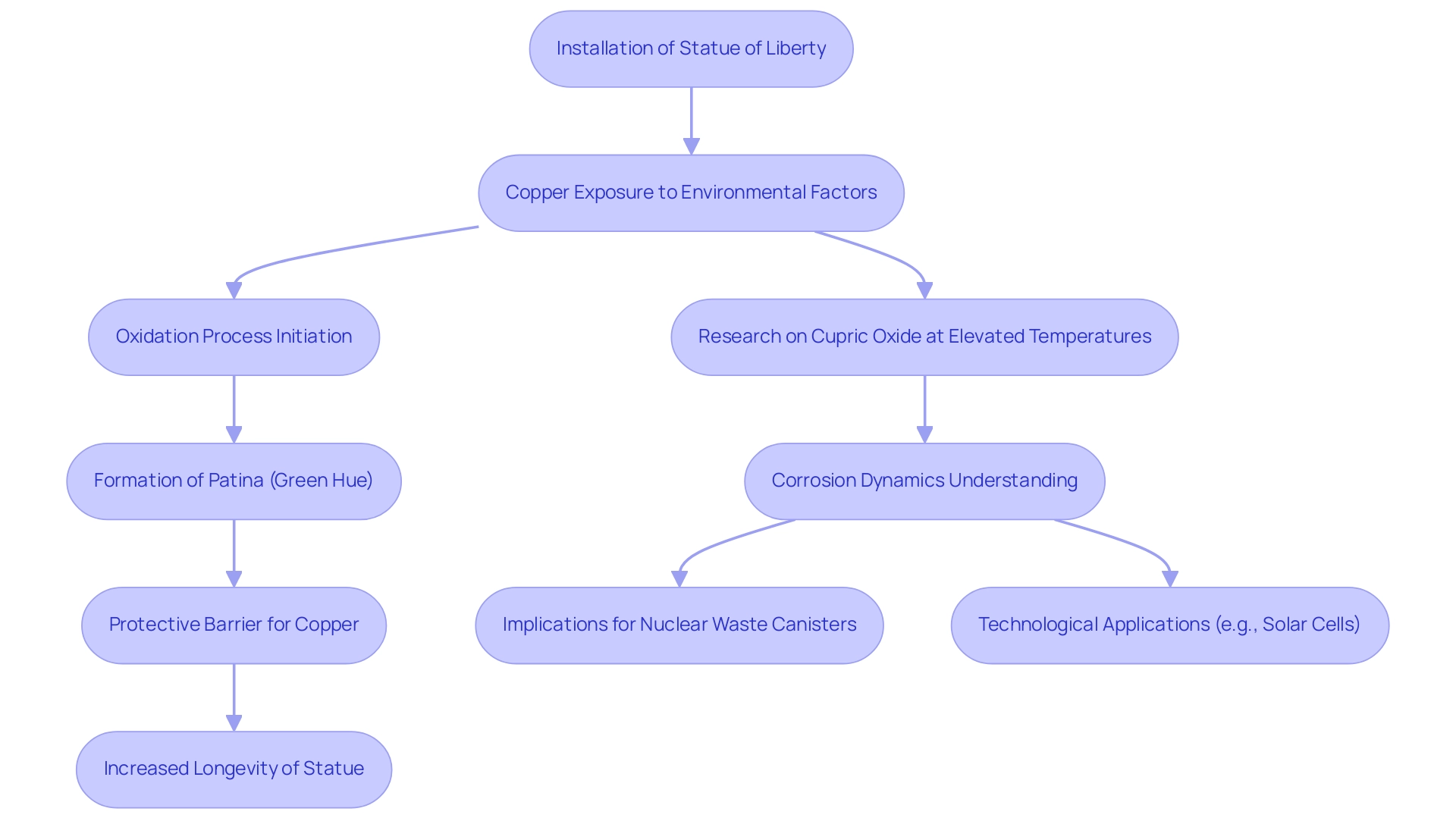
International Standards and Compliance in Copper Sourcing
Obtaining metal for monumental projects, such as the copper in the Statue of Liberty, necessitates strict adherence to international standards and regulations governing quality and environmental impact. These standards are crucial in guaranteeing that the metal utilized is of high performance, devoid of harmful impurities, and sourced sustainably. As noted by industry expert Cornejo, the integrity of significant projects relies heavily on ethical sourcing practices, underscoring that
the best mining projects sit on principles of sustainability and compliance.
Meeting these regulations not only ensures the longevity of the construction but also aligns with contemporary ethical sourcing practices. The purchasing process must include comprehensive testing and validation, ensuring that selected materials consistently meet or exceed these rigorous standards. This commitment contributes to the enduring legacy of the Statue of Liberty, particularly in terms of the copper in the Statue of Liberty, while responding to the increasing demand for ethical sourcing, especially as the metal market anticipates growth driven by energy transition sectors, projected at a CAGR of 10.7%.
This growth signifies an urgent need for robust compliance measures in sourcing practices to meet the rising demand. Furthermore, the long-term outlook for metal prices remains positive, which affects purchasing decisions and highlights the significance of following international standards. Advancements in sustainable metal sourcing are influencing the regulatory environment, which highlights the necessity for adherence in resource procurement for monumental structures.
Additionally, insights from the case study on regional copper price projections for 2025 indicate that government infrastructure projects and renewable energy initiatives will significantly impact copper demand, further underscoring the relevance of compliance in sourcing standards. Furthermore, in explosive potential environments, the use of Non-Sparking Tools is crucial to ensure safety and compliance. These tools, crafted from substances that do not generate sparks, are essential in preventing ignition in hazardous locations.
Additionally, the characteristics of DOMADIA Oxygen Free Copper (OFE/OHFC) make it an ideal choice for critical medical components, where purity and performance are paramount. Its non-corrosive characteristics guarantee dependability in sensitive applications, emphasizing the significance of choosing suitable substances in both significant and medical contexts.
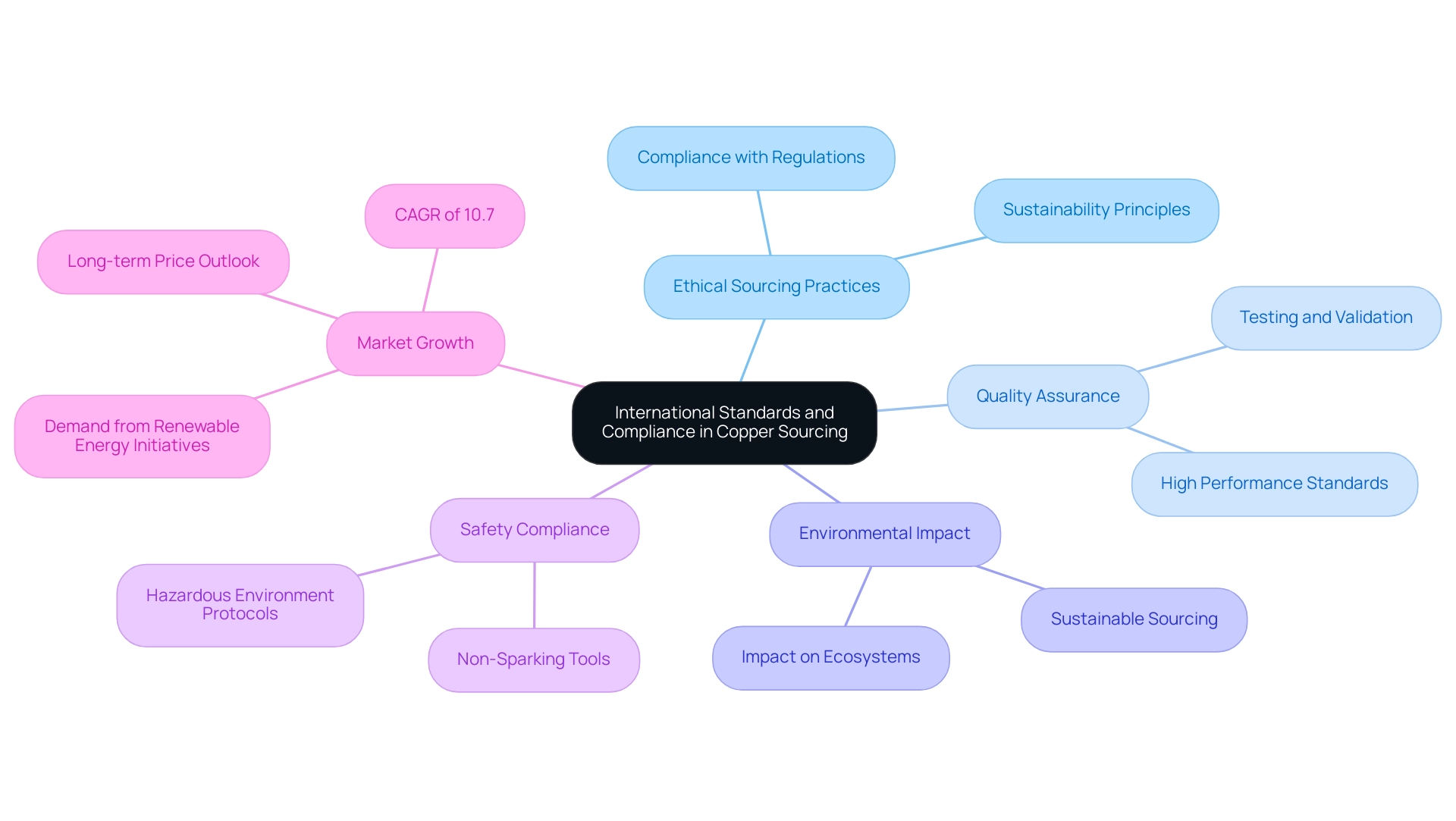
Future Conservation Efforts: Preserving the Copper Icon
The conservation of the Statue of Liberty is paramount for ensuring its legacy endures for future generations. Regular inspections of the metal surface are critical to detecting any signs of wear or damage, allowing for timely interventions. Protecting this iconic monument involves various strategic measures, including:
- The application of protective coatings designed to minimize corrosion
- The creation of controlled environmental conditions around the statue to mitigate external impacts
This is particularly important in light of recent news indicating that the Trump administration’s actions led to a contraction of roughly 1.2 percent of the U.S. protected area estate, highlighting the need for robust conservation efforts. Public education initiatives are also vital; they foster appreciation for the statue’s historical significance and highlight the importance of its ongoing conservation. Programs aimed at increasing awareness can galvanize community support and funding, ultimately aiding conservation efforts.
As Eck emphasizes, the role of media in raising public awareness about the need to conserve cultural heritage is crucial. Furthermore, UNESCO states that the protection of cultural heritage is not merely an aesthetic concern but a matter of security that requires collective action. By employing these comprehensive conservation strategies and learning from global efforts as outlined in UNESCO’s International Policies for Cultural Heritage, we can ensure that the Statue of Liberty continues to stand resolutely as a global symbol of freedom and hope, reflecting the diverse stories and values of the American experience.
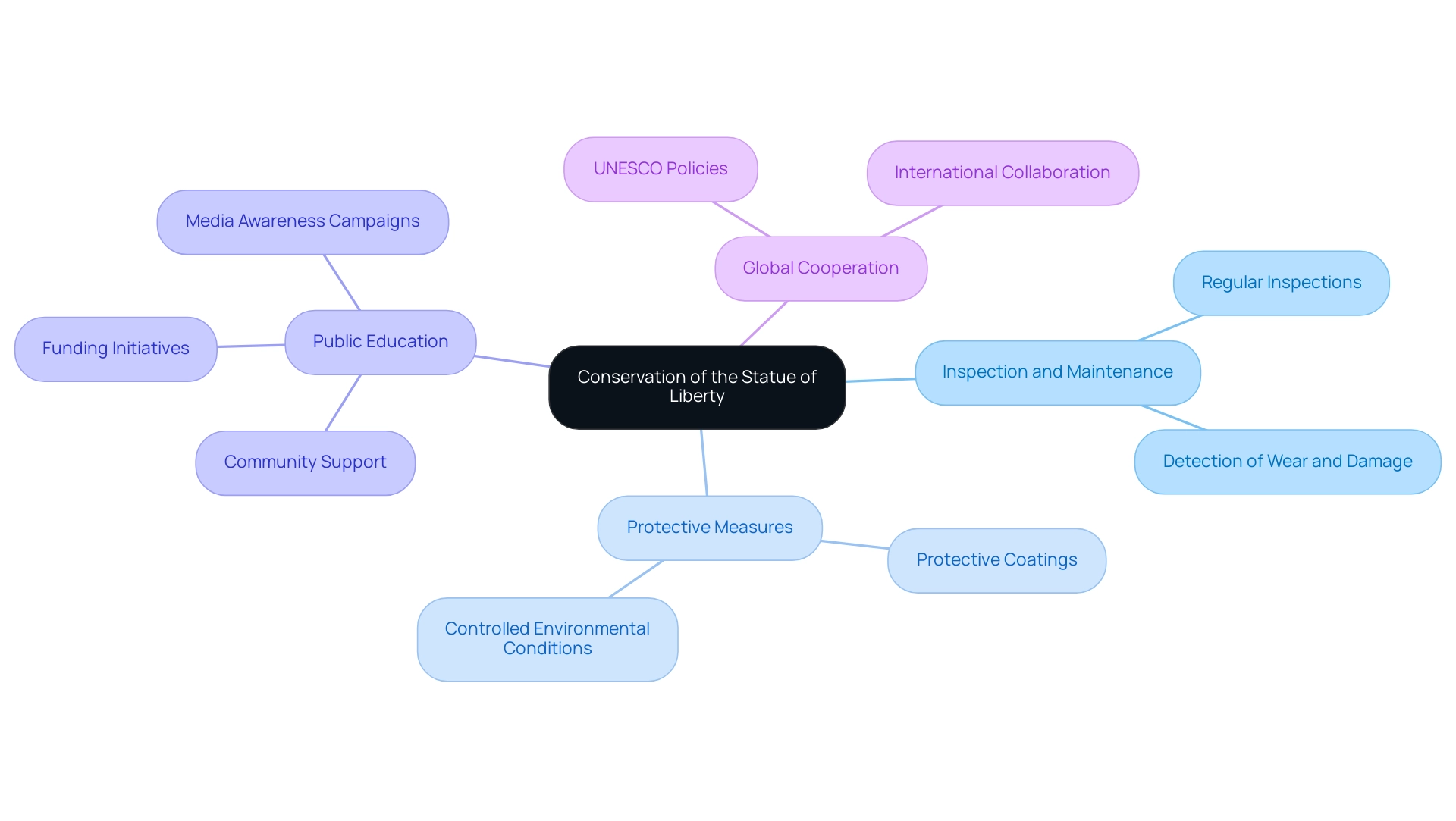
The Economic Impact of Copper Procurement in Monumental Projects
The acquisition of metal for iconic structures such as the Statue of Liberty, which includes copper in the statue of liberty, illustrates the complex economic consequences of sourcing materials for monumental projects. While non-sparking tools are crucial in explosive settings, their significance to metal sourcing is restricted in this context. With metal prices influencing over a third of the Consumer Price Index (CPI), fluctuations can dramatically alter project budgets, compelling procurement managers to adopt strategic approaches that balance cost optimization with quality assurance.
As Goldman Sachs anticipates a bullish price projection of $6.80 per pound by 2025, understanding these dynamics becomes even more essential. Additionally, Teck Resources has updated its metal production estimates to a range of 420,000 to 455,000 MT, down from the previous estimate of 435,000 to 500,000 MT. This shift highlights the volatility in metal supply and its potential impact on pricing.
The metal acquisition process not only tackles budgetary issues but also has a ripple effect on local economies, creating jobs and stimulating areas involved in mining, refining, and manufacturing. Furthermore, the significance of high-quality metal products, such as DOMADIA Oxygen Free Copper (OFE/OHFC), is crucial for critical medical components. Recent case studies indicate that the advent of weekly options in the copper options market could complicate pricing strategies by allowing for more precise risk management, making it crucial for procurement professionals to stay informed about market trends.
Ultimately, navigating these economic factors is vital for ensuring that monumental projects remain both financially feasible and impactful.
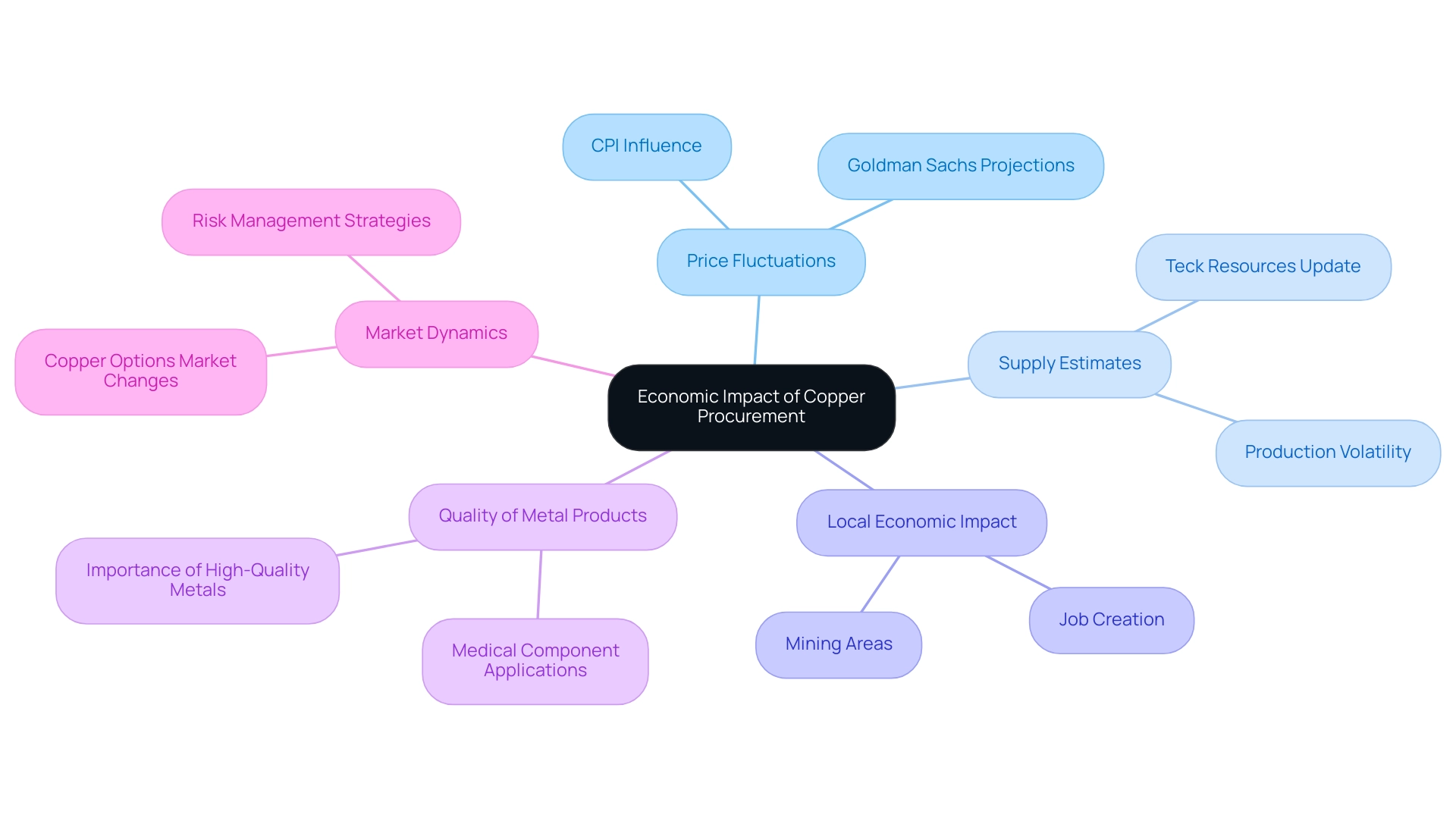
Conclusion
The exploration of copper’s role in the construction of the Statue of Liberty reveals its indispensable nature, from the material’s exceptional durability and versatility to its transformative patina that enhances both beauty and protection. The craftsmanship involved in assembling this iconic monument showcases the skill of artisans and engineers, highlighting the importance of human expertise in monumental projects. As copper continues to evolve in its applications, its significance extends beyond historical contexts, underpinning future technological advancements and sustainable practices.
Sourcing copper ethically and in compliance with international standards is crucial for ensuring the longevity and integrity of monumental structures. The economic implications of copper procurement further emphasize the necessity for strategic approaches that balance cost with quality, particularly as market dynamics shift. The projected increase in copper demand underscores the relevance of robust compliance measures and sustainable sourcing practices in navigating the complexities of the global market.
Finally, the ongoing conservation efforts for the Statue of Liberty reflect a commitment to preserving cultural heritage for generations to come. By implementing comprehensive strategies and fostering public awareness, the legacy of this monumental symbol can be safeguarded, ensuring it continues to inspire and resonate with future audiences. The interplay of craftsmanship, material science, and ethical sourcing not only enhances the statue’s historical significance but also reinforces its status as a beacon of freedom and hope.

